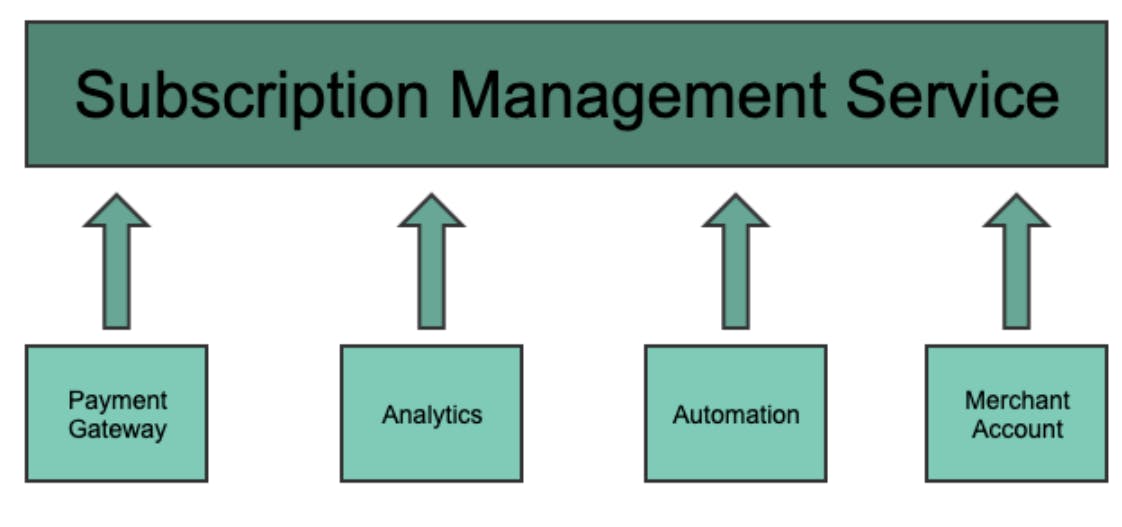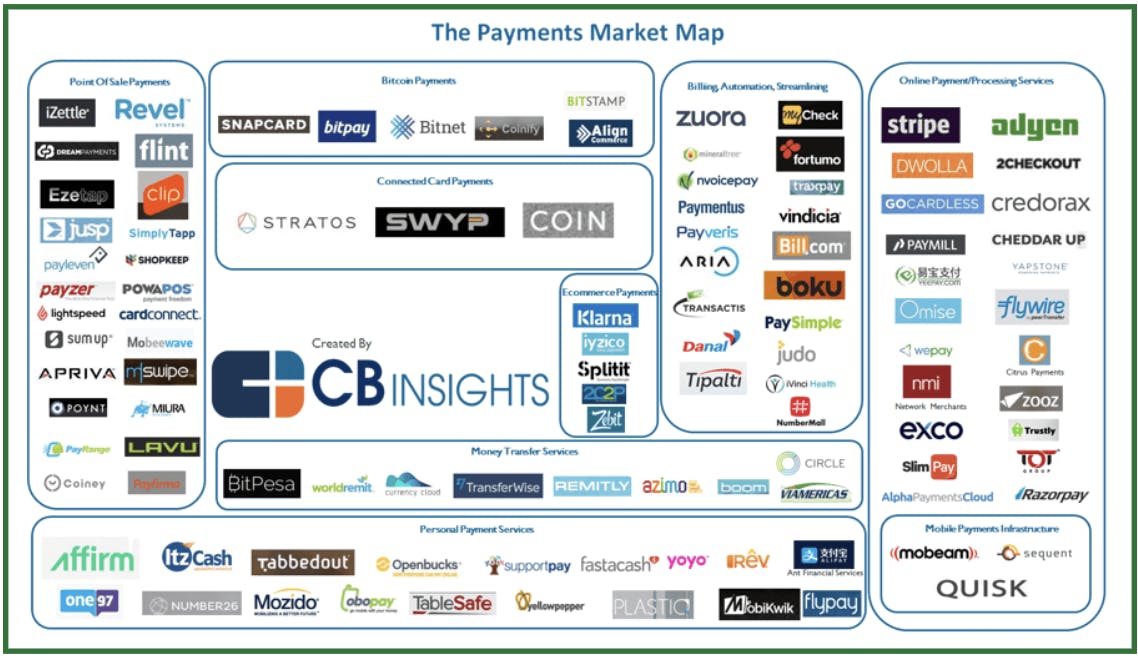Running a subscription-based business is a lot of work. Every month you need to make sure recurring payments are being processed by your payment gateway and accepted by various merchant accounts. If you miss out on a one-time payment or recurring charge, that’s money you might not get back.
That’s where a subscription management service can help. A subscription management service streamlines these billing procedures so you always know how and when your payments will be processed. Every point along the customer lifecycle—whether it’s an initial purchase, a monthly charge, or a change in a customer’s plan—is handled automatically.
Automating these processes creates a smooth customer experience and gives you peace of mind. Instead of worrying about administrative payment tasks, you can get back to what’s really important—growing your business.
What is subscription management?
Subscription management is the process of handling recurring payments for products or services your customers are subscribed to. While these can be handled manually through a payment gateway service, automating the billing process with a subscription management platform is faster and more reliable.
What is subscription management software?
Subscription management software is a tool used by businesses to facilitate the creation and fulfillment of subscription purchases. It supports businesses with subscription plans, customer retention, and recurring billing, while providing a source of customer, plan usage, and revenue data.
5 benefits of subscription management system for SaaS businesses
The core function of subscription management systems is to schedule and accept recurring monthly payments. With that said, these tools offer additional payment features that can help subscription companies reach global customers, monitor their business performance, and more. Here are a few key ways these systems benefit subscription companies.

Subscription management services bring together several payment and billing functions.
Without a systematic approach to subscription management, it’s very easy for things to fall through the cracks. And every time that happens, you’re losing out on potential revenue.
1. Automate payments
Subscription management services automate your recurring payments and generate invoices for each individual transaction. This functionality saves time that would otherwise be spent manually generating each invoice, inputting customer data into a payment processor, and scheduling a payment. Every transaction is also automatically tracked and stored for future reference, making analyzing trends and reporting on them much simpler.
2. Collect foreign currency
Many subscription services work with different payment gateways. Working with several gateways ensures that regardless of the geographic location of your customers, you’ll always be able to take payment. Being able to use multiple payment gateways also makes it easier to provide a seamless customer experience for any customer. Focusing on only one payment gateway would cause unnecessary and troublesome bottlenecks in your process.
3. Gain insight
Most subscription management software will provide reporting and analytics on your payments as a part of their service. This makes tracking key metrics like LTV, MRR, and churn easier, taking away the potential for human error or bandwidth constraints. Whether you’re an ecommerce subscription box or a B2B software app, understanding these metrics helps you evaluate your pricing and make better decisions to support the growth of your business.
4. Sends transactional emails
While not every service will offer this feature, some subscription management tools help you send automated billing emails to customers. Automating these email receipts, dunning emails, and retention campaigns saves time and ensures the customer is always up-to-date with correct billing information.
Sending these emails through your subscription management software can potentially cut down on your marketing costs and prevent you from having to purchase an email service provider to handle these processes. It also decreases the potential for integration or data-sharing issues by keeping these emails under one tool.
5. Offer discounts
Some subscription management services like Stax Bill offer the ability to send coupons and discounts directly to customers. These discounts can help you retain more customers by making them an enticing offer to stay. Depending on the management service you’re using, these discounts can also boost the acquisition of leads in your marketing funnel.
Now that you know how a subscription management service can help you streamline your billing processes, it’s time to figure out which one is the best fit for your business.
Why use subscription management software?
Successful subscription businesses rely on customer retention as much as they do on acquisition. This requires:
- A great product and best-in-class customer service that attracts new customers and reduces the likelihood of subscribers churning voluntarily
- And a subscription management solution that minimizes the billing errors that lead to involuntary churn.
Subscription management software is designed to help businesses with the processes behind these requirements, enabling them to create and manage flexible subscription experiences for their customers.
Without it, businesses need to build subscription logic in-house to sit on top of a payment gateway. Implementing the level of flexibility required for a subscription model to be successful takes a lot of work from engineering teams. Once up and running, it needs continuous work to maintain and scale processes as you grow - and can ultimately slow down other growth initiatives like new product launches, testing pricing plans, or serving customers in new regions.
Subscription management and subscription billing software are often considered together, and a lot of the time are features of the same tool. Subscription billing facilitates recurring payments and subscription management, providing the subscription experience.
How you currently manage customer subscriptions (and other aspects of revenue delivery), where you operate, and the customers you serve will determine which features of subscription management software will have the most impact on your business.
Here are some to consider:
- Plan management: The ability to create, manage, and easily modify subscription plans of different lengths, with different price points and payment options, including different feature packages.
- Subscription lifecycle management: The ability to adapt and modify subscriptions across the customer lifecycle. This includes managing changes to customer payment details, upgrades, downgrades, subscription pauses or cancelations, and proration.
- Compliance: Financial compliance, including your responsibility to notify customers of any changes to tax regulations that affect their subscriptions. The level of compliance varies by provider and ranges from integrations with third-party tools to full compliance management and tax liability.
- Customer experience: Functionality for creating a seamless experience that increases brand loyalty and customer retention. This includes allowing customers to control their own subscription plans and payments. A seamless experience will also free your team from plan and billing support queries to focus on value-add and upsell opportunities.
- Reporting and analytics: A reliable source of customer and subscription data that enables businesses to make smarter decisions and optimize processes.
- Integrations: Subscription management is only one aspect of your revenue delivery infrastructure. Unless you use an all-in-one revenue delivery platform like Paddle, you’ll need to integrate your subscription management software with the other tools you use to run your business, including payment gateways, tax compliance, and fraud prevention tools, accounting software, and customer support systems.
What to look for in a subscription management service
The right subscription management software will be the one that fits your specific needs. A small startup offering a single-tiered monthly subscription won’t need the same kind of functionality as a multi-tiered enterprise solution. Deciding on which management tool to use is dependent on a number of factors, such as your subscription pricing strategy, your technology stack, and your customer base.
And there are a lot of options to choose from.

Payments market map via CBInsights.
With so many services in the market and more popping up every day, choosing a subscription management tool can feel overwhelming. Stay on track and find the best tool for your company by considering the following five factors when reviewing any service.
Easy integration with your tech stack
Drastic changes to your technology stack are never a good idea, so it’s paramount that your subscription management service integrates with the existing technology in your company’s tech stack. It might seem like this is easier for small companies with fewer services in use. However, even small companies must factor in how their technology will grow and what integrations they’ll need as the company scales.
Larger companies, on the other hand, will likely encounter issues with technical debt and complex systems that require more specific features from a new tool. That said, they’ll also have the resources to work through more complicated payment processes in-house.
Payment gateways for target customers
Know your buyer personas inside and out. It’s important to understand their preferences, their interests, and their location when creating personas. If a segment of your customer base is located in Asia, for example, you’ll need subscription management software able to process payments in that currency. The same can be said if you’re thinking about expanding into new markets in the future. Your tools need to grow with the demands of your company.
When you’re investigating a new service, check out its own integrations page. If you don’t see payment gateways listed that support your customer locations, that’s an immediate red flag.
Accessible and insightful reports
What metrics are the most valuable for your business? Does your subscription management service report on them? The software you choose should be able to deliver insights into your business that help you grow. If you want to track your CAC payback period or how your ARPU is changing, for example, look for a subscription management service that reports on these metrics.
It’s also important to review how these reports appear visually. Gathering information on these metrics is much more difficult if the reports are confusing or incomplete.
Happy customers
Whenever you look for new tools to support your business, it’s important to see what customers of those tools say about them before you commit to making a purchase. With that said, read reviews of subscription management services so you’re able to make an informed purchase. Just make sure you’re looking at these reviews in aggregate—5 negative reviews out of 20 is much more telling than 5 out of 500.
Helps you get results
Setting goals for your company's growth is important. Every piece of software you use should contribute something of value toward achieving these goals. If your subscription management service doesn’t help your company grow, then why have it in the first place? When you integrate a new tool into your tech stack, it needs to add value.
If your reports are inaccurate, or the integration to your tech stack requires a lot of ongoing maintenance, there’s no point in using the service.
10 questions to ask subscription management vendors before you buy
Choosing the right software for your business is tough. There’s a lot of competition out there and which one’s right depends on your business, what you need the software to be able to do, and how it will fit into your revenue delivery infrastructure.
To help you navigate your way through the decision-making process, here are ten questions to ask before you buy:
- How does the software manage subscription pauses, cancelations, and refunds? Can customers manage these requests themselves?
- Can I easily manage promotions, discounts, coupons, and trial periods?
- Can I build subscription plans with different billing frequencies, and how does the software manage proration?
- What does the customer see when they set up an account or need to renew their subscription? Can these communications be branded?
- How does subscription data sync with my customer support workflows? Does the software provider offer support for customer issues relating to subscriptions?
- What metrics can I track, and in what level of detail?
- What support does the software offer regarding sales tax compliance?
- Can I test different subscription plans or pricing models against each other?
- What level of protection does the software offer against fraud and chargebacks?
- What third-party integrations are available? How can this software connect to my existing payment and billing workflows?
Find the right subscription management tool for you
Subscription management is a vital part of every SaaS company’s business model. If you’re not able to facilitate recurring billing payments, your customer relationships will suffer and this can drive down revenue.
A service that fits your specific requirements will help save time and money while retaining customers. We hope that the information in this guide will help you find the best subscription management solution for your business.



